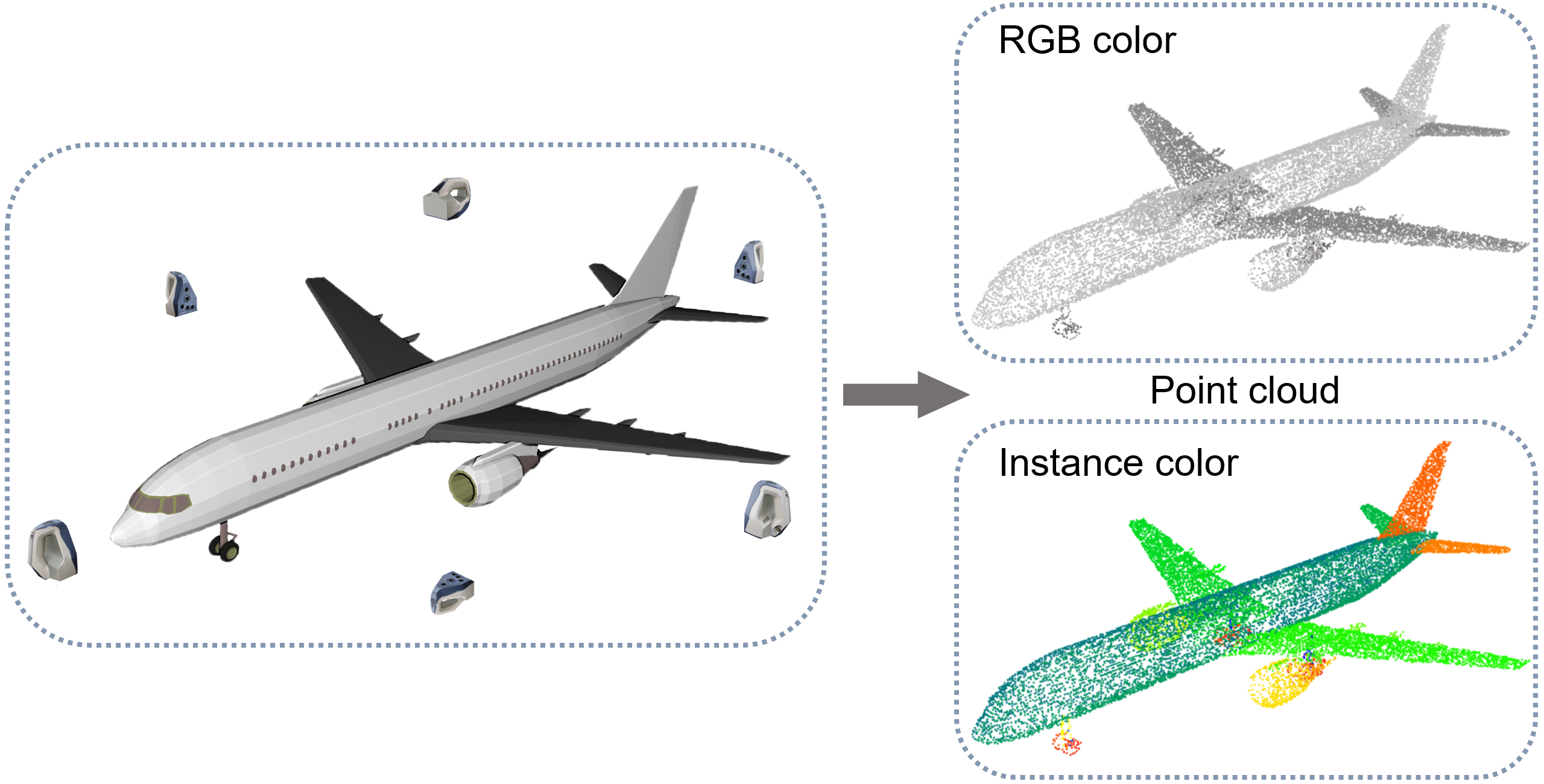This script is designed to simulate real world 3D scanners (Kinect, PrimeSense, etc.) in virtual environments. With this tool, you can easily create RGB-D or point cloud datasets from synthetic models, such datasets could be useful in the field related to computer graphics and computer vision.
Given a 3D mesh, a set of customizable virtual cameras scan the model from different views, the RGB-D images and corresponding point clouds are then produced. The dimension of the output point cloud is N×7, which contains xyz coordinate, rgb color, and an instance index (if available).
The script is running on Blender (tested on version 2.80, 2.90), the render core is from bpycv.
-
Python environment of Blender
Windows:
cd <path to blender>/2.90/python/bin python -m ensurepip python -m pip install -U pip setuptools wheelLinux:
cd <path to blender>/2.90/python/bin ./python3.7m -m ensurepip ./python3.7m -m pip install -U pip setuptools wheel -
bpycv and other dependencies
Windows:
# Download openexr for windows from https://www.lfd.uci.edu/~gohlke/pythonlibs/#openexr python -m pip install OpenEXR-1.3.2-cp37-cp37m-win_amd64.whl python -m pip install opencv-python bpycvLinux:
./python3.7m -m pip install opencv-python openexr bpycv -
h5py (optional), save point cloud compactly
Windows:
python -m pip install h5pyLinux:
./python3.7m -m pip install h5py
Two different setups are provided: scan_single_around.py and scan_single_random.py. The former creates fixed cameras from six directions around the object, pursuing a complete coverage of the object; the latter creates random cameras in each frame, which simulate the real scanning situation.
Run the following command:
blender -b -P scan_single_xxx.py <model_dir> <output_dir> <model_id> <save_rgbd_image> <save_pc_per_view> <save_pc_complete> <pc_per_view_size> <pc_complete_size>
Example:
blender -b -P scan_single_around.py ./example_obj/model.obj ./output plane 1 1 1 2048 16384
Run the following command:
python scan_batch_shapenet.py <num_process> <dataset_dir> <output_dir> <save_rgbd_image> <save_pc_per_view> <save_pc_complete> <pc_per_view_size> <pc_complete_size>
Example:
python scan_batch_shapenet.py 8 F:/datasets/ShapeNetCore.v2 ./output 1 1 1 2048 16384
Note: This script is tested on ShapeNetCore.v2 dataset. For other datasets, please modify the directory structure in scan_batch_shapenet.py accordingly.
-
Single scan
- model_dir: the full path to the target model
- model_id: the unique name of the target model
-
Batch scan
- num_process: number of processors to be used, adjust according to your computer hardware
- dataset_dir: the full path to the dataset root folder
-
Common
- output_dir: the output directory
- save_rgbd_image: whether to save RGB-D and instance image (0 for false, 1 for true, same for below)
- save_pc_per_view: whether to save the partial point cloud of each single view
- save_pc_complete: whether to save the complete point cloud by combining all views
- pc_per_view_size: the points number of the single view point cloud
- pc_complete_size: the points number of the complete point cloud
-
Camera intrinsic:
Modify
INTRINSICmatrix inscan_single_around.pyorscan_single_random.py -
Camera numbers:
Modify
cam_locationslist inscan_single_around.pyorNUM_FRAMESvalue inscan_single_random.py -
Lights:
Modify
setup_blender()function inscan_single_around.pyorscan_single_random.py
